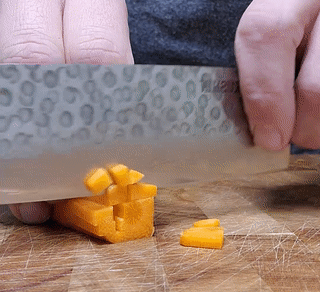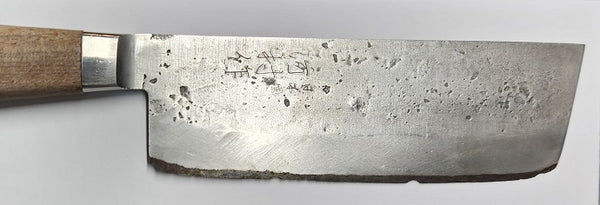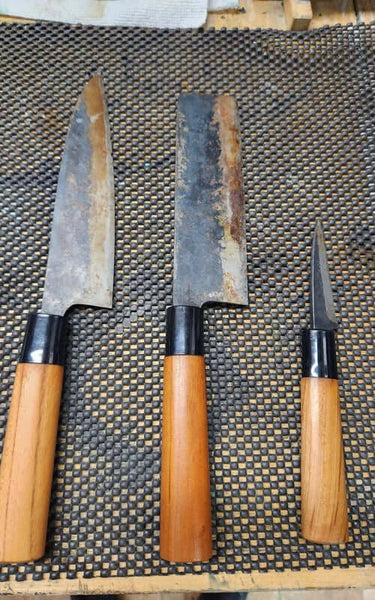In this short blog, we'll get to the point and delve into the realm of Japanese knives, exploring their top 3 positives while also shedding light on the top 3 challenges.
As a leading Canadian knife retailer, we believe in providing you with a comprehensive and transparent understanding of the knives that can be found on the market.
The Pros of Japanese Knives
Exceptional Craftsmanship
Japanese knives are renowned for their craftsmanship, often passed down through generations. Skilled artisans employ traditional techniques that result in blades with incredible sharpness, balance, and edge retention. Handmade Japanese knives typically tell a story of dedication and mastery.
High-Quality Materials
Japanese knife makers are known for using premium
Stainless Steel,
Carbon Steel and powdered steel. Unlike many other makers that forged their names from imported steel billets, steel forged in Japan contributes to the knives' impressive sharpness, hardness, look and shape, exemple:
Stainless Steel
Gyuto with Tsuchime/Damascus Finish:
Carbon Steel
Bunka with a Kurouchi Finish:
Versatility in the Kitchen
From delicate slicing to precise chopping, Japanese knives excel in various culinary tasks. Different types, such as Gyuto (chef's knife), Santoku, Nakiri, Bunka, Kiritsuke, Honesuki, Deba, Yanagiba, Sujihiki, and many others cater to specific cutting needs. Each shape serves a specific purpose and holds an important reason for being used in a particular way.
The Cons of Japanese Knives
Prone to Chipping
While the hardness of Japanese knives contributes to their sharpness and edge retention, it also makes them more prone to chipping. Many models are razor-thin, providing a unique cutting sensation, but careful handling and regular honing are crucial for maintaining the integrity of the blade. This is why we often advise customers that if a food item is too hard for easy chewing or requires excessive force to be cut, it's advisable to shy away from your high-end Japanese blade and opt for a thicker and softer Western knife instead.
Specialized Care Required
Japanese knives demand special attention. They are typically not dishwasher-safe, and improper cleaning or storage can lead to corrosion. Proper cleaning, drying, and regular sharpening/honing are essential, but it requires knowledge and the right tools to avoid further damaging the blade. For instance, diamond honing rods can be detrimental to a thin carbon steel blade. That's why we're here—to assist you in understanding and implementing crucial care practices.
Cost Considerations
The craftsmanship and high-quality materials that define Japanese knives come at a price. They are often more expensive than their Western counterparts. While the investment is justified by their performance and reputation, it's important for customers to consider whether the high maintenance and brittleness of the blades are acceptable for their household. That being said, if you can overcome the extra care, you will fall in love and find yourself wondering why you waited so many years before getting your first one.
As a prominent Canadian knife retailer, Kakushin is dedicated to offering you Japanese knives that not only exemplify the artistry of their origin but also address the challenges associated with them. We provide guidance on proper care and maintenance, ensuring that your investment in a Japanese knife is rewarded with years of exceptional performance.
We invite you to explore our Japanese Kitchen Knife Collection.







Leave a comment